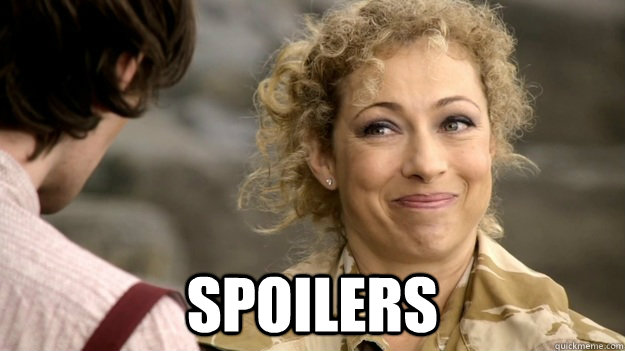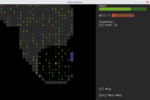Life is Strange: Double Exposure
video-game, review
I had no idea what to expect. I mean, this is as direct a sequel to the original Life is Strange as you can get. A sequel to the game that essentially kickstarted a new genre — half 3D adventure half visual novel (with a tiny bit of super janky puzzling on the side).
Life is Strange: Double Exposure is the fourth (fifth if you count Before the Storm, sixth if you include Tell me Why — I do) instalment in the universe where children or young adults gain supernatural powers — triggered by trauma — and… shit gets real.
Except this one features Max Caulfield from the first ever Life is Strange. Without Chloe Price, because the developers were too cowardly to follow up on the obviously correct ending of the first game (you know the one I’m talking about). Or possibly wanted a clean break and focus on new characters.

And it’s Life is Strange with all that entails: janky controls, bad but thankfully rare puzzles, fun people to get to know and snoop on and of course — a traumatic tragedy that now brings new powers.
Max’s new best friend Safi is shot and instead of rewinding time (I would be well up for more timey-wimey hijinks with Chloe FWIW) Max can shift between two realities: one where Safi is dead and the other one where she’s alive.
In-between trying to cope with another death she’s taking it upon herself to figure out what happened and save the remaining Safi in case she’s in a similar danger.
Oh and Max is now an actual successful professional photographer who got a teaching position at a university — and most of the people she interacts with are either students or other teachers.
She feels more mature (far more open to foul language, more judgemental and no stranger to being black-out drunk) while still riddled with the same self-blame and anxieties as the teenage Max. Still trying to figure life out, still being basically a high-functioning emotional wreck (which, given her past, fair).
I’m well up to picking things up a few years later, but there’s a bit of a weird tonal shift here.
You have this jaded adult Max and the curious naïve student she used to be all mixed together. One moment she’s lost in thought looking at a frozen pond and the next one she literally calls a student who’s a bit nosy "this little shit" in her journal. Like, have you looked in the mirror? What exactly are you yourself doing at the very same time?

And that’s kind of the whole game — absolutely wonderful bits mixed in with some really bad ones. They’ve beautifully ramped up the character’s facial expressions so the dialogues feel far more natural and able to convey emotion and meaning. It’s really cool most of the time, but occasionally people pt on the strangest expressions.
But that’s basically every Life is Strange game, isn’t it? Decent story, wonderful people and sense of place mixed in with jank, bugs and headshaking nonsense that brings you out of it all. It’s not like the original game (even remade) holds up great today (though I still love it to death and replay it every now and then).
I’ve enjoyed it, but groaned really hard at the "dream sequence" in the final episode even as it helped illuminate some of Max’s past and her state of mind.

I don’t think it’s the sequel anyone expected or hoped for, but I’ve enjoyed it and if I ever bring myself up to braving the less-appetising aspects of it, I’d love to do a replay, connect the dots and make some different choices. Giving more agency to Gwen for example.
One thing I really appreciated: the game lets you skip the few mechanical puzzles that are in there. I think True Colors had something similar and though I didn’t need it much, it was great to have.
And finally, they’re hinting at another return of Max Caulfield in the future. Which I’m a bit more unsure about, but I’m definitely here if/when it happens.
Spoilers

I liked the ending — more optimistic, hinting at something interesting going forward. It’s the first time in any of the games that two people with powers learned others exist (I think). And actually even met here and were like… "wait! You too? I thought I was the only one!". That felt great.
I would lose all "dream sequences" in all games (chiefly among them the original Life is Strange as well as this one). Also the Dark Room callbacks and the replaying of the torture scenes and Chloe’s killing. You can show Max being broken without showing those moments over and over and over again.
At this point, it’s a deliberate choice by a human being here in the real world. Someone had to come in and in essence say: "wouldn’t it be awesome to add in all the worst parts of the first game". And they did. And it’s bad. Because guess what: it’s just repeating the worst parts of the first game.
The murder investigator was such an odd thing. I can’t figure out any purpose to his character other than add some drama and kind of forcibly move the plot forward towards showing the photo of Max pointing a gun at Safi. And the way he just disappeared — absolutely nothing came out of that. There was that one scene where Max was convinced that touching someone from a mirror world would kill you like it did the police officer. But no, not even that was true there.
Literally that whole situation seemed to have no reason, no consequence and just could have been cut with very little impact.
After having played the full game I love Safi’s character. I felt a bit uneasy about her throughout. Sometimes great, other times giving me really bad vibes — that there was something off from the very first moments. And like, that is basically all true. But knowing the background, her abilities and what she plans to do next — she’s awesome. An amazing ally, but also she could (and maybe will be!) be a fantastic villain.
As much as I’d love her to be the force of good who brings all the "gifted" people together, seeing her just take the matters into her own hands — with the best intentions of course — would be glorious(-ly terrifying).
Really wonderfully written character.
Endgame Stats
At the end of each chapter, you’re presented with the important choices you’ve made and the percentage of people who took each choice. Here are mine:
Chapter 1







Chapter 2







Chapter 3







Chapter 4






Chapter 5




